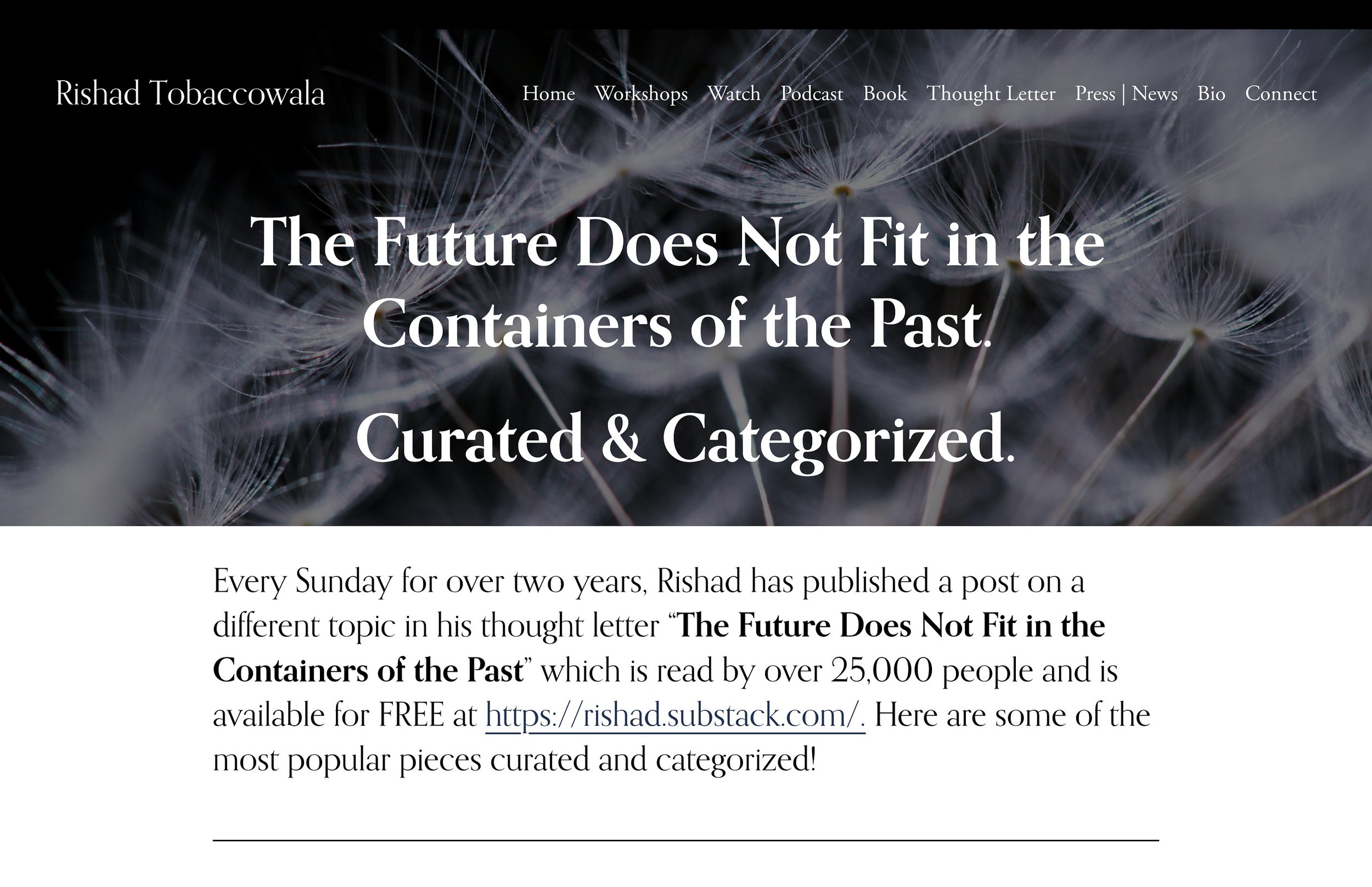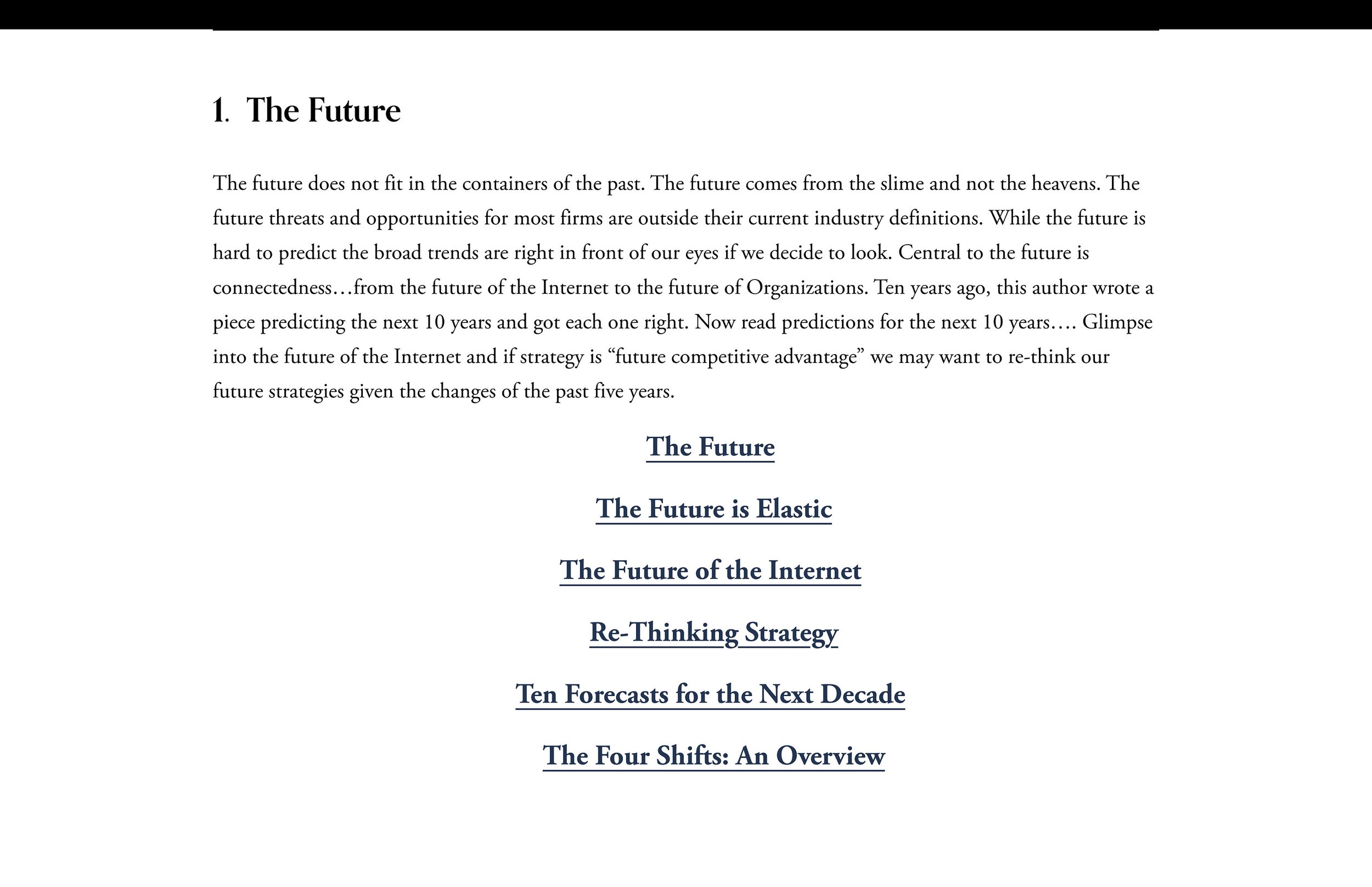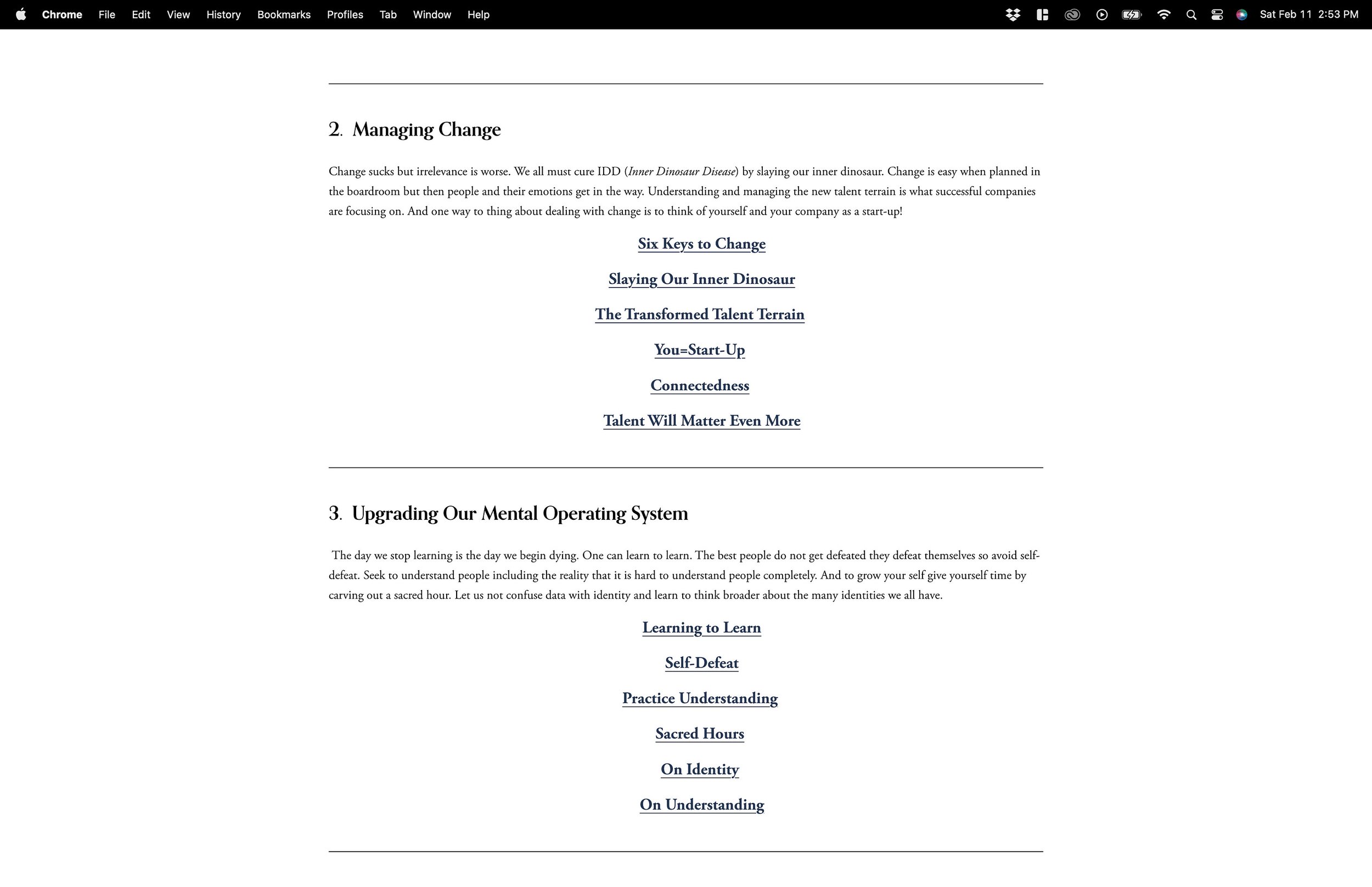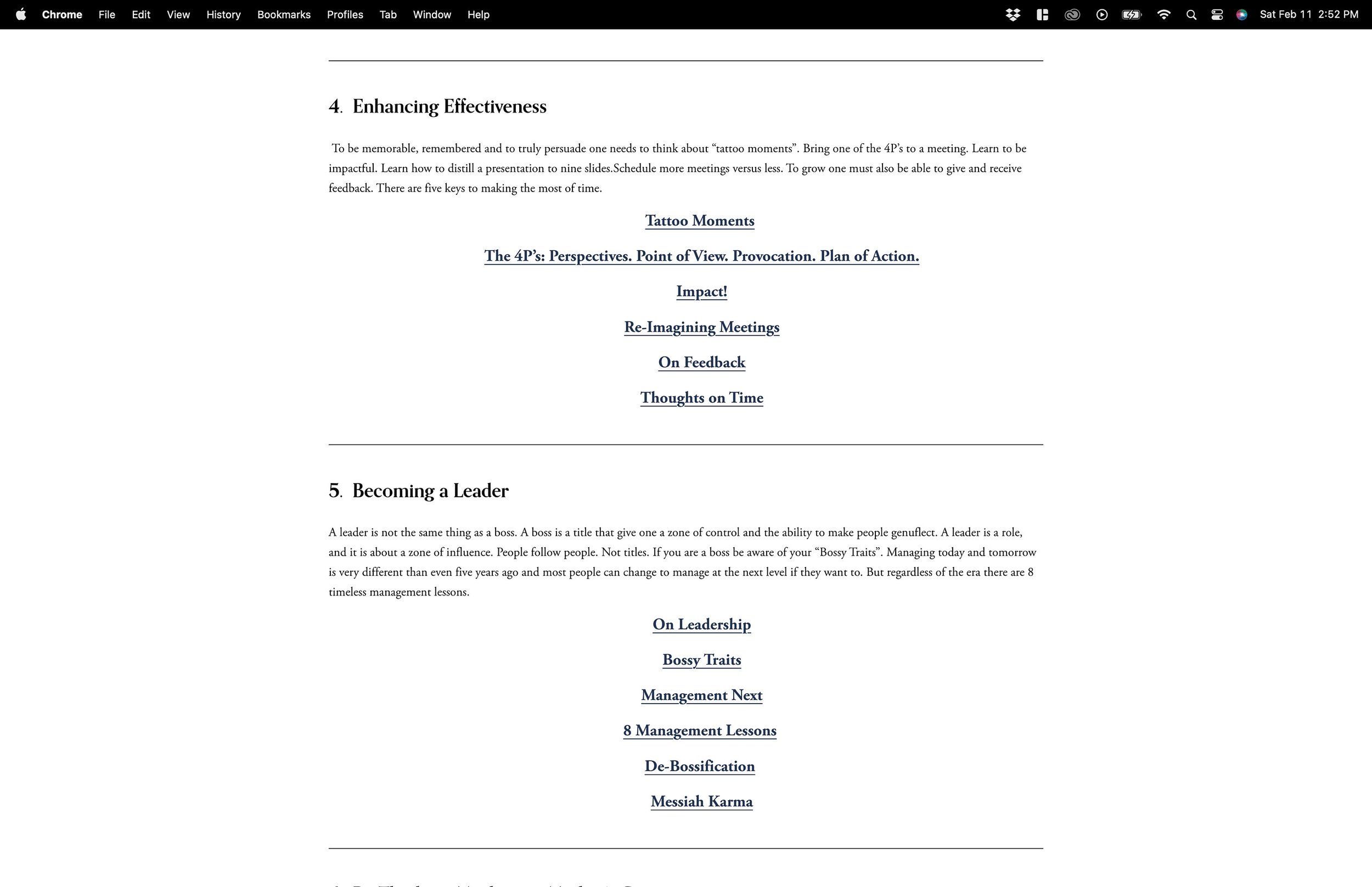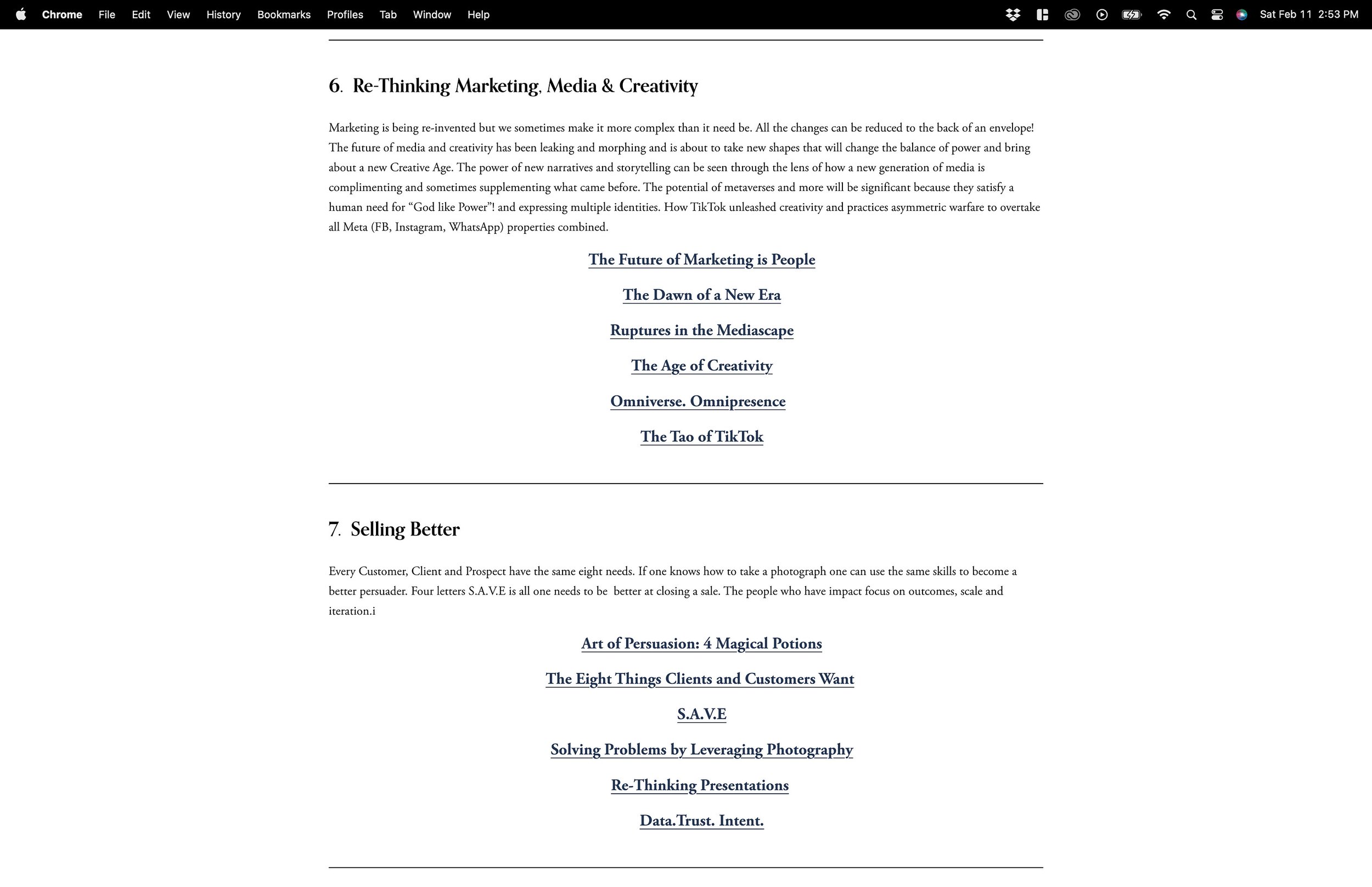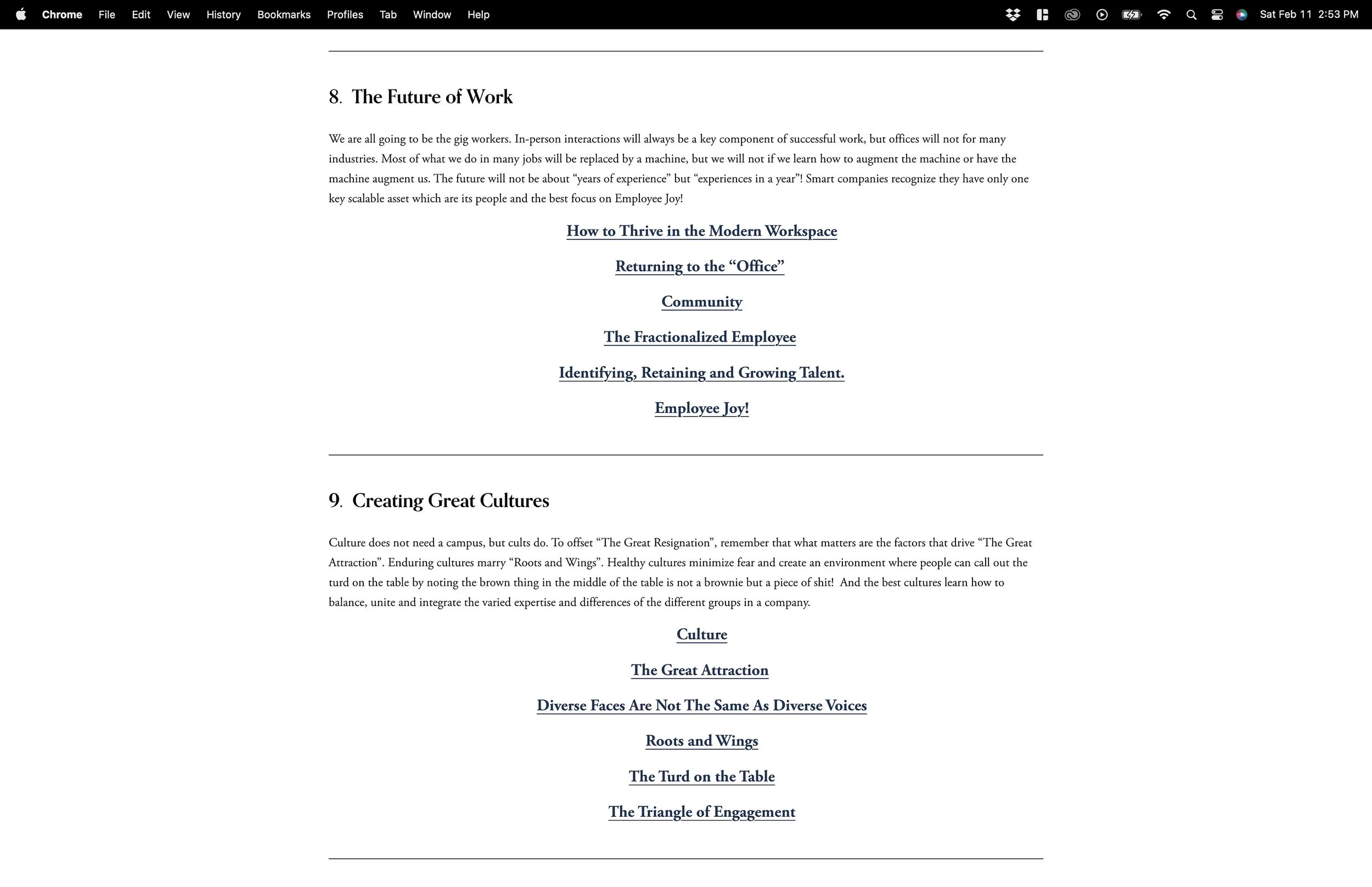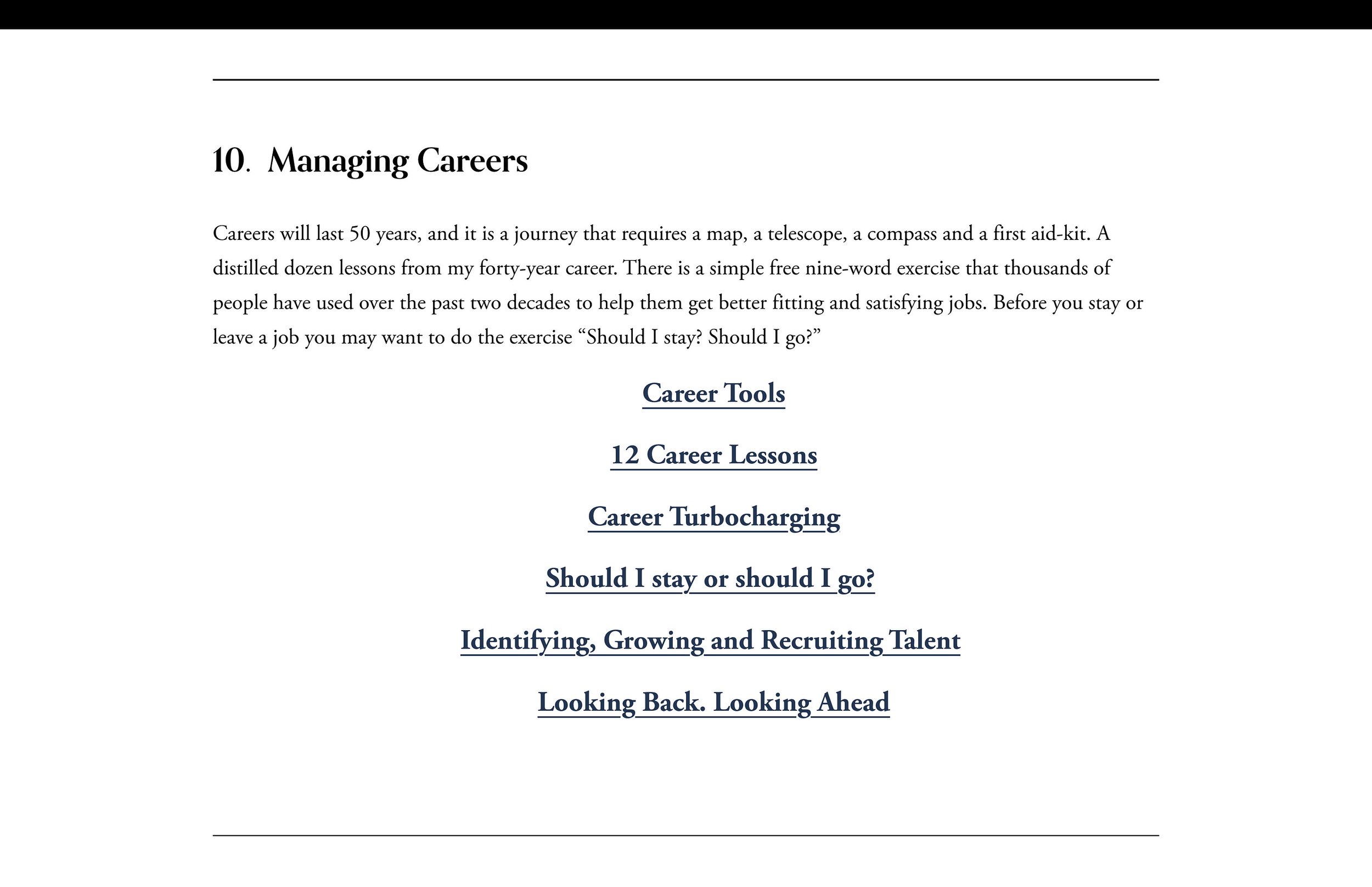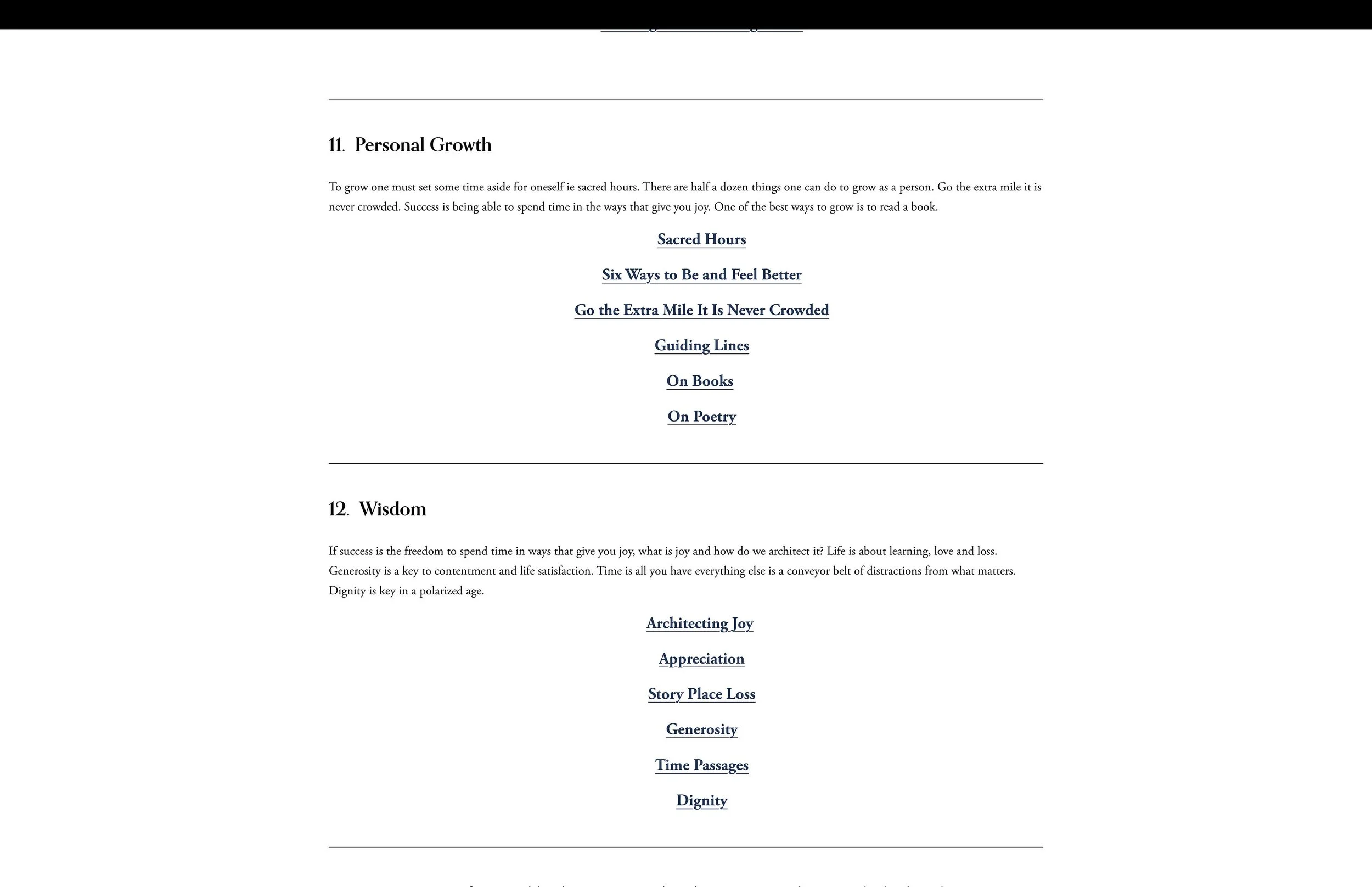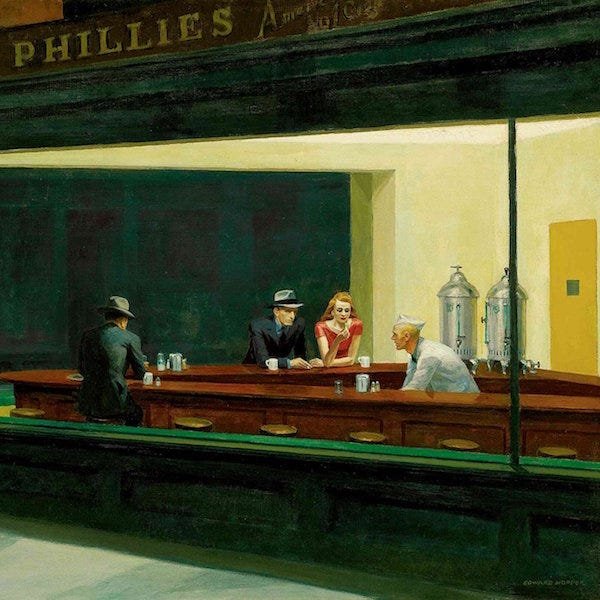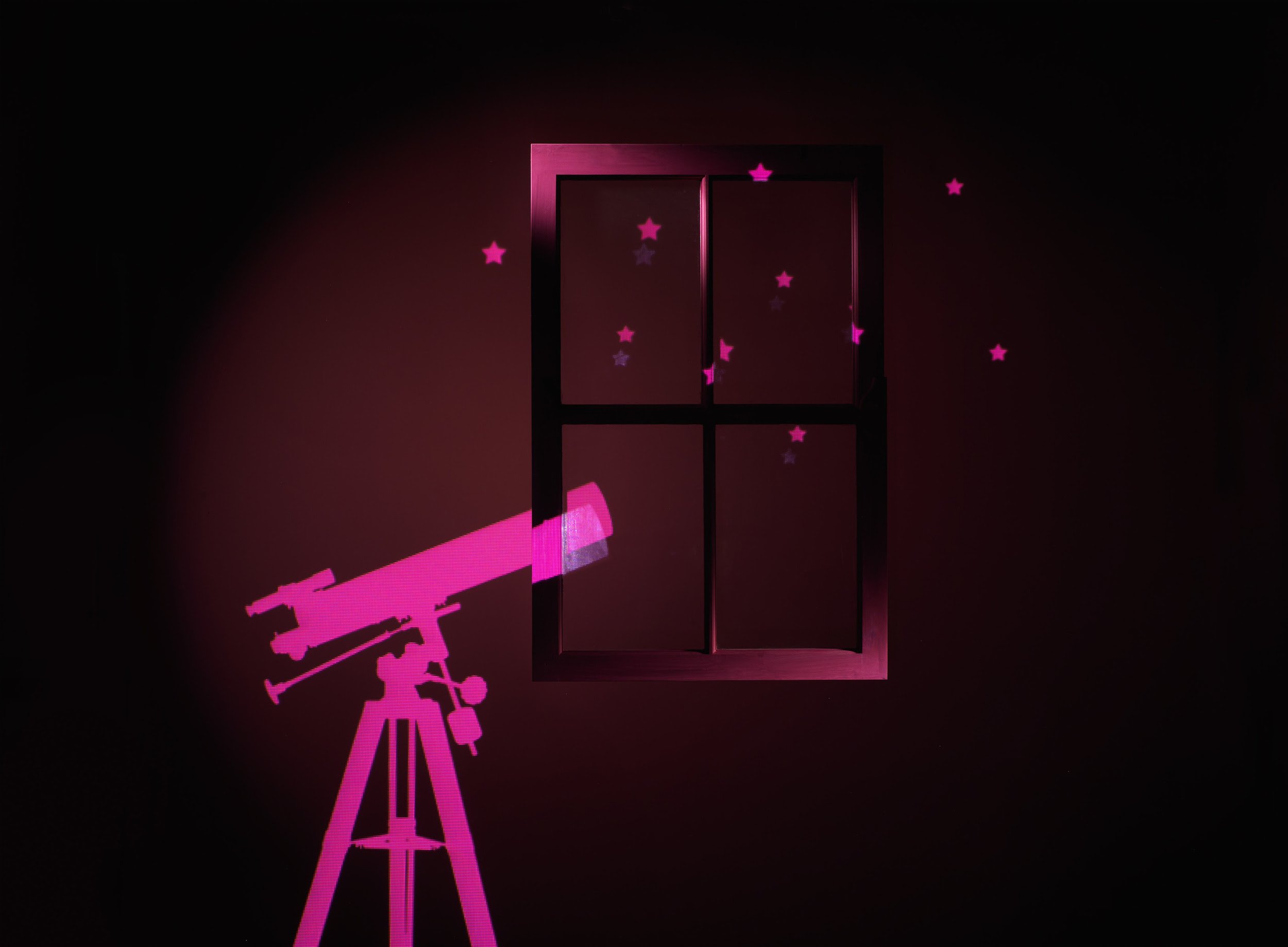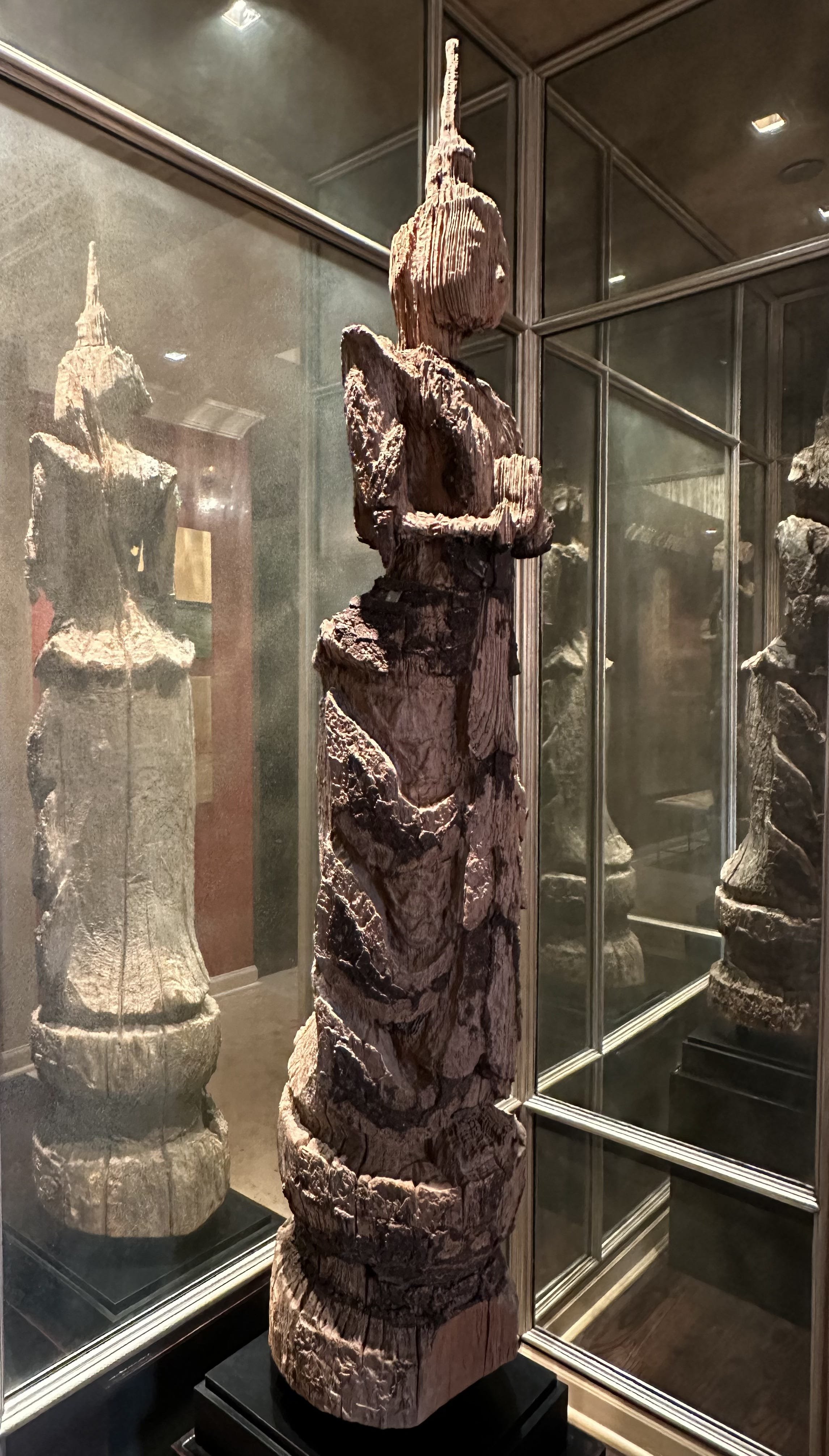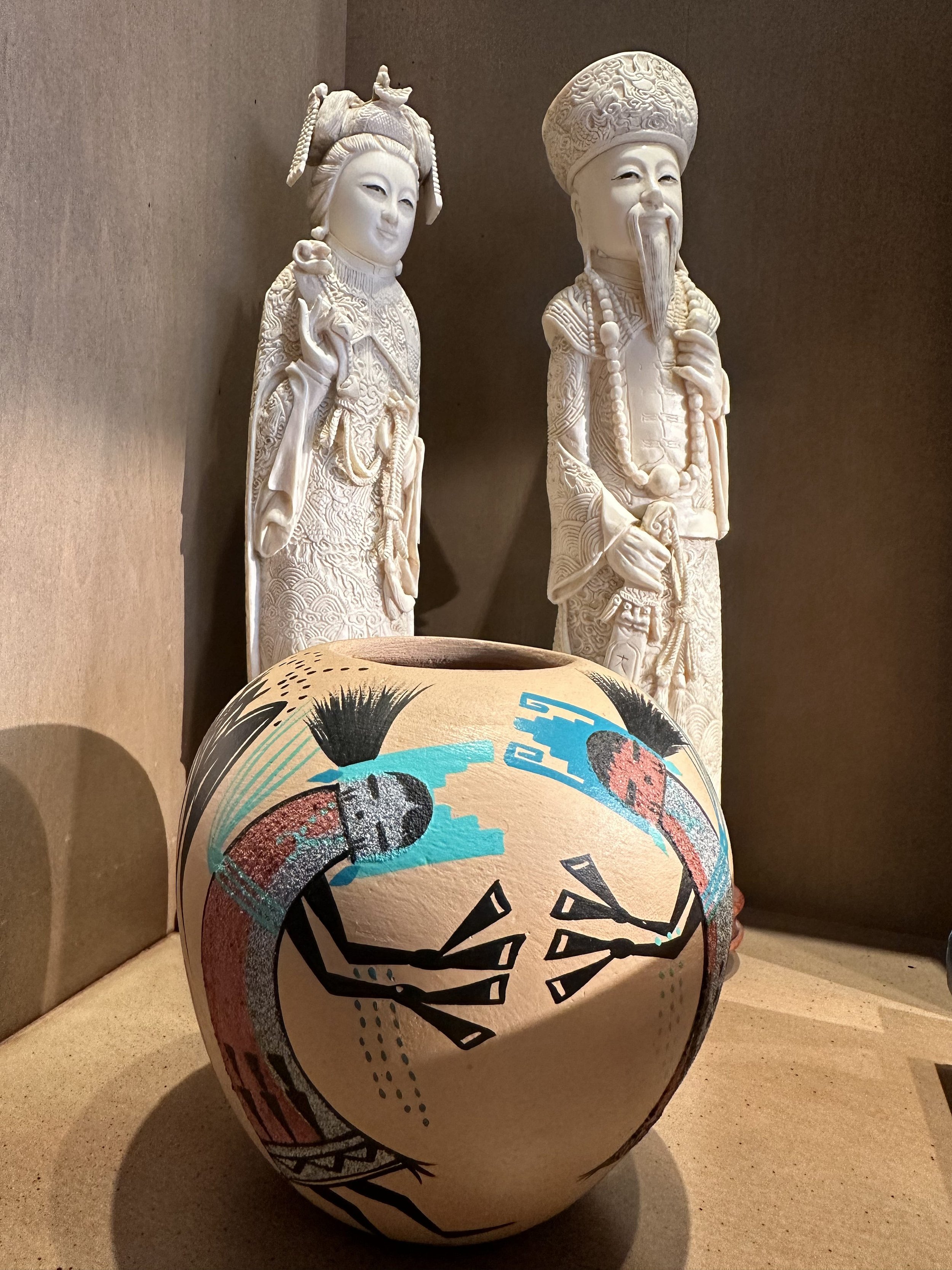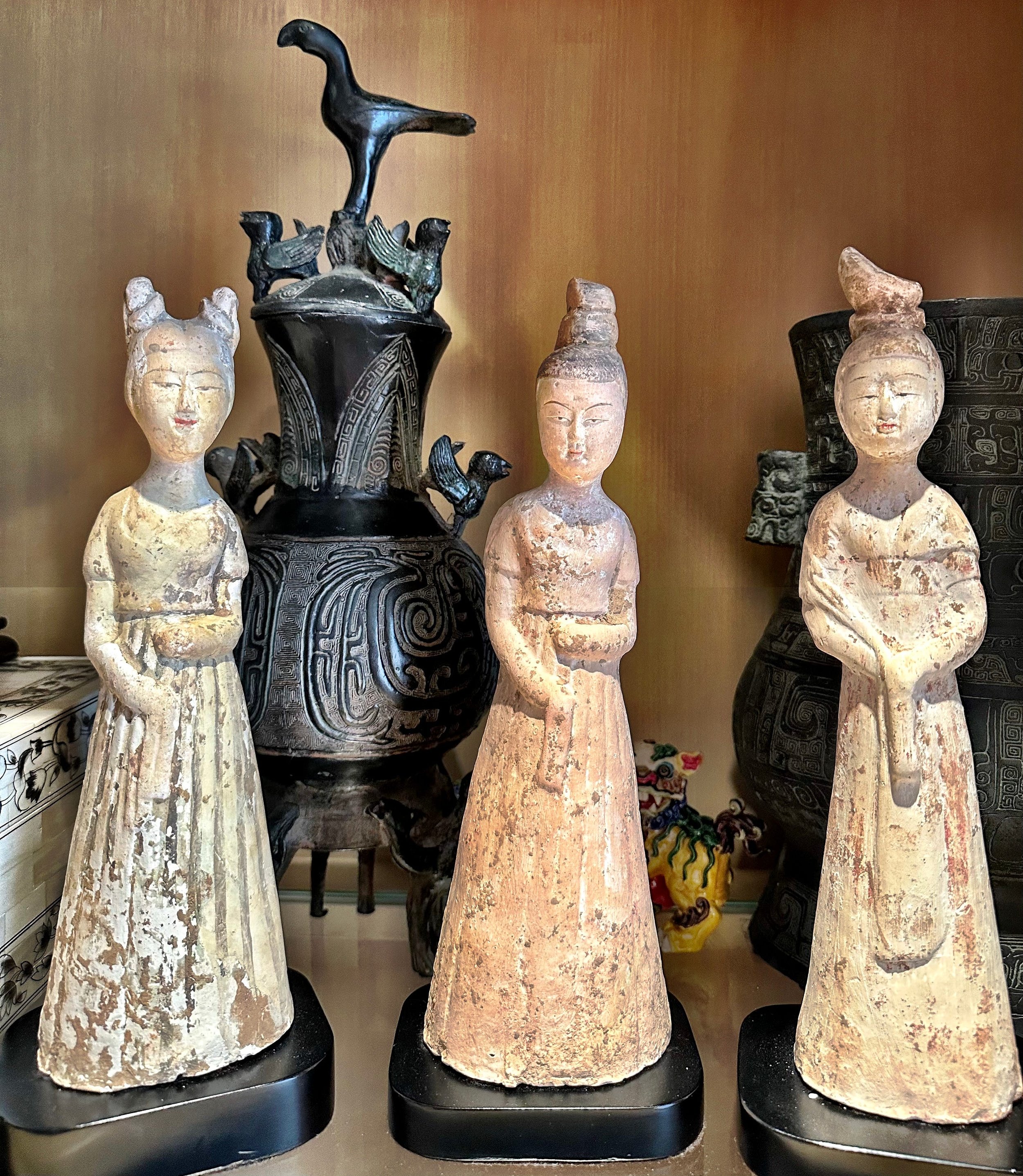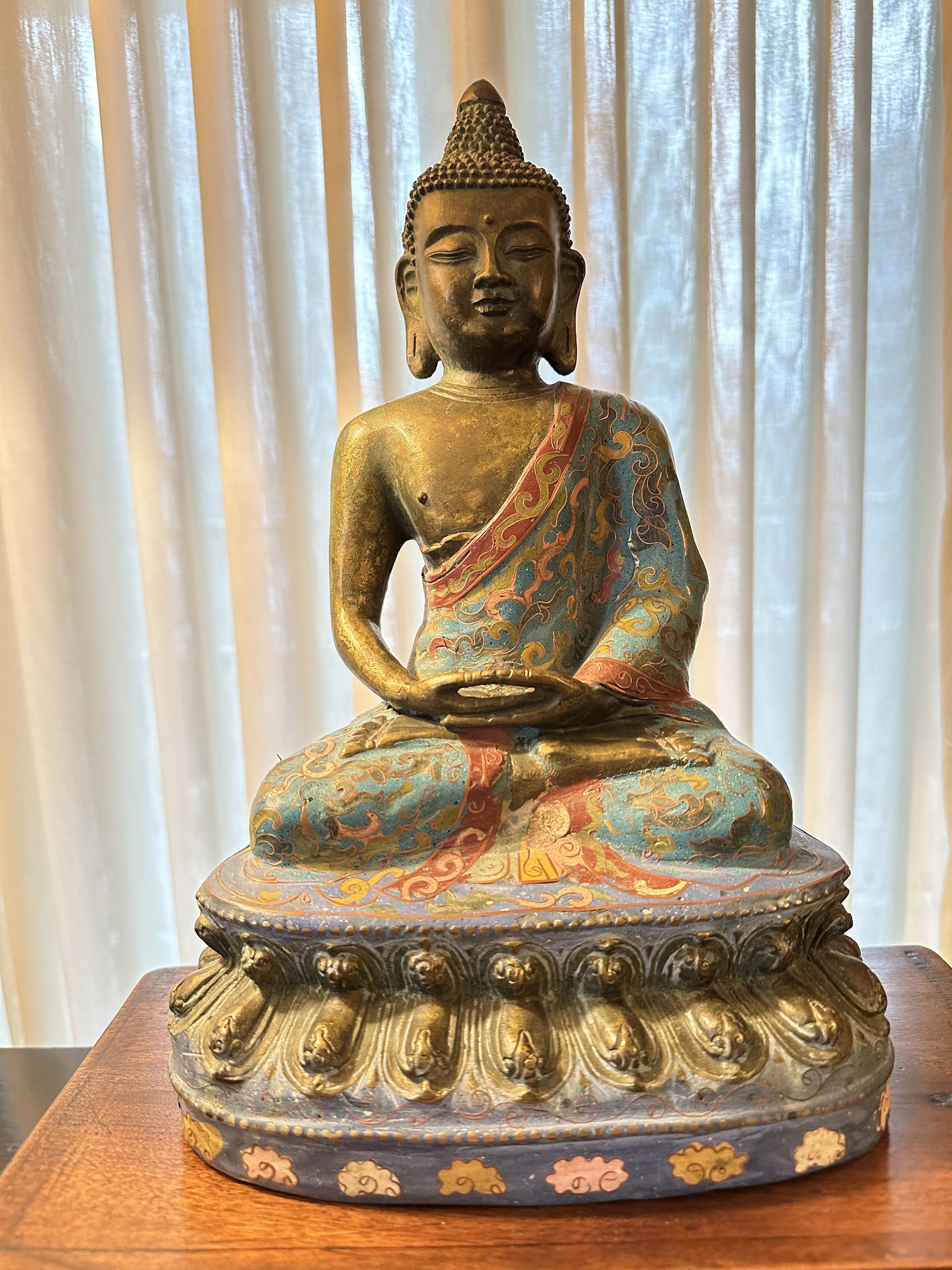Great Interactions!
Photography by Paul Wakefield
At times when we meet with people individually or participate in a meeting, we leave believing that we enjoyed a great interaction.
Over time it has become clear that to ensure great interactions individually or with teams we should focus on leaving them with three things:
Clarity. Belief. Energy.
Thanks for reading The Future Does Not Fit In The Containers Of The Past! Subscribe for free to receive new posts.
Photography by Paul Wakefield
Clarity.
The Cambridge dictionary defines clarity as the quality of being clear and easy to understand.
In a great interaction or meeting people come out with a clearer understanding of a situation, with greater precision of knowledge, and clear-cut next steps than before the meeting or interaction.
Doubts are cleared. Any mixed signals clarified. Hedges eliminated.
Everybody is clear as to what they need to do next and who is doing what.
One leaves the interaction better informed and equipped to tackle whatever the challenge or problem might be.
Now think of the meetings one has when people come out more confused, more unsure of what to do. We have all attended these group gropes or even individual one on one meetings which were thick with dense mumbo-jumbo, buzz-word bingo, oozy obfuscation and mixed signals that left us more mystified and doubtful than before we had the interaction.
One way of ensuring clarity is to speak simply using plain language and have people play back what the next steps are.
Photography by Paul Wakefield
Belief.
It is one thing to be clear as to what must be done next but as important is to leave an interaction with a greater belief in your or your team’s ability to do what is necessary.
Many managers collapse the mood of a room by berating an individual or team’s performance without some offsetting knowledge or guidance on how they can do things better or improve themselves.
A great interaction occurs when one leaves a meeting feeling more confident about one’s capabilities in tackling what must be done. Even if one had received feedback in a meeting about not having done a good job it is key to leave with guidance and a sense of motivation that one can fix the situation and finding a remedy.
A dirge like procession of individuals with hang-dog faces, droopy shoulders and shuffling feet is not just a downer but a negative vibe that echoes through everybody who interacts with the individuals whose self-belief was drained out of them.
A key is to leave someone feeling better about themselves after you meet them rather than worse even if you provide them with less than positive information by showing how you or another individual tackled the same problem, reminding them of the times they recovered when they were knocked back by a challenge or sharing your individual stories of tackling similar situations.
Photography by Paul Wakefield
Energy.
We are living in a time of great change, accelerating velocity of business and multiple pressures.
This is leaving people often drained, burned out and wanting to just curl up under a blanket from the noise and tension.
Great interactions leave people rejuvenated, replenished, and refreshed.
While clarity is about the mind, belief about the heart, energy is about the body.
Bringing energy to a meeting can boost others. Energy is contagious. Other ways to leave people more energized can involve leveraging humor, providing the opportunity to take a break, or bringing empathy and understanding on the forces that drain energy with some ideas of fixing them that can leave people with a boost.
Regardless of whether one interacts in person or remotely, individually or in groups, how senior or junior one is the likelihood of having a great meeting or interaction is likely to improve if one focusses on leaving everybody you interact with clarity, belief, and energy.
A Gift.
Two and half years ago on Sunday, August 16, 2020 I began the first edition of this thought letter as follows:
The idea behind this newsletter is that of a gift.
Like a gift it is free (no subscription fee, no up-charges to access special content, no advertising, no affiliate links, your email will not be shared or sold, and no algorithm is running in the background mining your behavior)
Like a gift I hope it will be of some value in helping you see, feel and think differently about how to grow yourself, your team and/or your company in the future.
Like a gift, I hope it will generate goodwill for the giver. Your attention and time which is so valuable. Good karma. Stronger relationships.
Since then I have written every Sunday for 131 weeks on a different subject.
Have been fortunate that tens of thousands of people subscribe or read my writing every Sunday (it is also reprinted and distributed by other publications all over the world) and increasingly there has been a request to find ways to access past writing when someone wants to share or use it for some reason. Almost all my pieces are evergreen since they are not aligned with the news or politics so you can read a piece from two years ago and it is likely to be relevant to the times and your needs.
So, I have curated the best 6 pieces of writing in the 12 areas that I write about on a single page that can be bookmarked, shared, and accessed by anyone anywhere on any device without charge or even entering an email.
This page will constantly be updated always containing the six best pieces in each area. A better piece will replace a current piece. So, it will not only be current but continue to be a distillation of the best.
Here is the page: https://rishadtobaccowala.com/100 and below is a look on what is available in each of the 12 areas and how best to leverage it.
The Future.
We all should be concerned about the future since we are going to spend the rest of our lives there. This section contains a broad thesis on the future (The Future), the four shifts remaking the future (The Four Shifts) as well as ten specific forecasts for the next 10 years (Ten Forecasts for the Next Decade) and why every company needs to re-think its strategy (Re-Thinking Strategy) and how future organizations will be elastic in nature (The Future is Elastic)
Managing Change and Upgrading Ourselves.
The future does not adapt to us but we must adapt to the future.
This means we must change. But change sucks. However since irrelevance is worse, we must change. How do we manage change especially our own? (How do we slay our own inner dinosaur?) And what are the essential elements of making a company transform (Six Keys to Change)
One of the ways to transform and change is to upgrade our own mental operating systems. (Learning to Learn), ensuring that we do not get so high on our own fumes that we fail to adapt and defeat ourselves (Self-Defeat),
Enhancing Effectiveness and Becoming a Leader.
In an accelerated world of unbundled and distributed work and next generation technologies such as AI we will see a decline in the power of “bosses” (De-bossification) and a need to work not just in tandem with but add value to the increasing capability of machines. (The Four P’s). How does one lead and be effective in such an era? (Management Next?) How do we re-imagine meetings and how do we give feedback in a world of DEI, ESG, Remote Work and concerns about our own relevance? (On Feedback) We will work with machines but influencing, inspiring, and building people will still be critical (Tattoo Moments, On Leadership)
Re-thinking Marketing and Selling Better.
Marketing is being re-invented but frankly people have made it needlessly confusing. The Dawn of a New Era attempts to explain the future of marketing with one single chart! The Future of Marketing is People makes the case we should not think about consumers, customers, and members but people, that we should market through people versus to people and that marketing people need to upgrade their skills and their roles in the company. The Age of Creativity reminds us that in a world of plumbing it will be poetry that will differentiate.
We are all in sales in one way or the other. The Art of Persuasion:4 Magical Potions distills the best learning on this topic from Eight Things Clients Want, how to Solve Problems Using Photography, why S.A.V.E is a key filter for sales and why if you need to have a deck of more than 9 slides you truly have nothing to say. Re-Thinking Presentations remains the most popular post I have written.
The Future of Work and Creating Great Cultures.
My next book (in progress) to be published globally by McGraw-Hill in Fall of 2024 is tentatively titled Re-Thinking Work. The challenges of distributed work post Covid that companies are struggling with is but a side show to what is coming in a world of four generations at work, next generation technology, new marketplaces, and a wave of multi-polar globalization among many things (How to Thrive in the Modern Workspace). Work in 2029 will look nothing like 2019 in how it will be done, who will do it, where it will be done but why we work and the importance of culture (Culture), the need for employee engagement (The Triangle of Engagement), the critical role of talent ( Identifying, Retaining and Growing Talent) and what will attract people will stay the same (The Great Attraction).
Managing Careers.
Make no mistake every single person at every level of every firm is re-thinking their career. My career writing except for a post on how to write presentations (Re-Thinking Presentations) are the most read and shared. Thousands of executives have leveraged these learnings. Read Career Tools for an overview, 12 Career Lessons and Looking Back, Looking Ahead for everything I have learned in a forty year career on how to manage a long and winding journey that we will all have, and Career Turbocharging is an exercise that will change the way you frame and filter yourself and your opportunities forever.
Personal Growth/Wisdom.
My older readers find these pieces particularly relevant, and this is the section most shared by many leaders with their teenage or young adult children.
The only thing we have is time (Time Passages). And so much of life is a combination of Story. Place and Loss.
While we are growing our companies and our bank accounts and our reputations let us not forget to grow ourselves (Sacred Hours), that we got here because of mentors and guides and other elders (Go the Extra Mile it is Never Crowded) and let us not forget that in the end it is about Architecting Joy, Generosity, and Dignity.
Hope you will find this page (https://rishadtobaccowala.com/100 ) helpful in your work and life. Feel free to use all of it. Nothing is copyrighted. Nothing needs to be attributed. There is no cost and there will never be a cost.
A Gift to you for the gift of your time in taking time to read my writing.
Thank you…
The Future of Marketing is People.
Painting by Edward Hopper
The future of marketing is people.
A) It is about understanding people as people and not just as consumers, customers, members, and users.
B) It is about getting people to advocate for a brand to other people.
C) It is about upgrading the status of marketing people and upgrading marketing people.
Painting by Edward Hopper
Marketing is about understanding people.
For too long marketers have fixated on consumers, customers, members, and users.
While these are important what is critical is seeking to understand people as people.
When one looks at a person as a consumer one is liable to miss a lot for the following reasons.
1) Narrow Lens: When one looks at a person as a consumer it is looking to understand the person through brand usage which is by very definition one of hundreds of brands filling met and unmet needs of a person. People do not define themselves by brands and rarely want to have relationships with brands. Some marketers define themselves by brands and have the delusion that people want to have a relationship with Tylenol versus just wanting their headache to go away.
2) Failure to see competitive threats: Viewing people as consumers or users means evaluating and benchmarking one’s brands with their use of other brands in one’s category. However, the greatest threat and opportunity tends to come from outside one’s category today due to technological disruption and changing behavior. Newspapers were disrupted by Google. Magazines by Instagram and today Television by Netflix and TikTok for example. Focusing on consumers and users meant that none of the incumbents were monitoring these other players. A focus on one’s category may lead a brand to be less pathetic than others in their category but not great or relevant for the future.
3) Failure to understand needs: One of the reasons categories get disrupted from outside is because by seeking to understand a person through category dynamics one may miss understanding what they are truly seeking. Dollar Shave Club and Harry users were not just looking for the best shave but a decent shave at a great price and convenient purchase. Multiple blades, vibrating blades, heated blades were no longer the key.
Painting by Edward Hopper
Marketing is getting people to advocate for you to other people.
The most powerful form of marketing has always been word of mouth.
Word of mouth has become exponentially more powerful due to social media and new tools and technologies.
Tik Tok provides editing and other tools to let anyone create and mix videos. Substack enables reaching tens of thousands to millions of people. It is easy to create and distribute podcasts.
Social media channels enable distribution.
Influencers and creators become key to a brand.
Instead of marketing to people we should consider marketing through people by arming them with assets, information, tools, and incentives.
Also, every marketing company should fixate on their employees and suppliers.
Make employees advocates by treating them well and aligning them with the marketing program.
Inform, trust, and pay suppliers well. They can be a source of ideas, marketing, and competitive intelligence.
Emerging AI tools such as ChatGPT will further empower the individual and the underlying trends of Web3 will now give them not just a voice but ownership.
Every company’s marketing and media programs should be grounded in marketing through people with significant investment and emphasis on generating and building advocacy among one’s external and internal audiences and partners.
One should fixate as much if not more on people than fixating on first party data, AI and the Metaverse.
Painting by Edward Hopper
Marketing is about upgrading the status and skills of marketing people.
Forty years ago, in my first marketing class at the University of Chicago we read Philip Kotler (a renowned marketing guru operating a few miles away at Northwestern University) who defined marketing as “understanding and meeting people’s requirements”
For the next four decades I got to work with some of the best marketing companies in the world and looking back two things stood out which taken together raises concerns:
1) Marketing has become more critical: People became more empowered as technology enabled them to have “God Like” power particularly in the past two decades since the scaling of Search, Social, E-Commerce and Mobile. These new technologies also have merged offline/online, above the line/below the line and fused marketing and experience into one. Therefore, understanding and meeting the requirements of people/gods became more important. So marketing was growing more and more critical.
2) Marketers power has diminished in most companies: The first two decades of my career it was not just Agencies that got to present to the Board room, but marketers did. Today look at the Board of Directors of companies including marketing firms, and few have CMO’s on the Board. There is the voice of money in the CFO, the voice of technology in the CTO/CIO, the voice of talent in the Chief Human Resources/Talent officer but where is the voice of the people/customer/consumer just when they are growing more and more powerful?
Companies will find it very difficult to succeed in a world of empowered people unless they have empowered marketers, marketing fuses into every part of the company and every individual upgrades their skills. Marketers need to be in the room where decisions are made rather than implementing or informing decisions.
But the wheel may be turning…
Recently there are signs that marketing is getting a voice by transforming the CMO role to one of a Chief Growth Officer, Chief Experience Officer, or Chief Transformation Officer or combining a CMO role with a Chief Data Officer role and no longer separating CMO from Chief Digital Officer.
Companies are beginning to look for “full-stack” marketers who can drive performance leveraging data and technology and platforms in the short run while building brand and reputation with storytelling, design, cultural relevance and more.
Marketing people need to have a greater voice and to have a greater voice marketing people need to upgrade our skills and capabilities for a world where marketing is not a side car attached to a motorcycle with some carnival barkers but the engine that makes the motorcycle and its engine throb.
The future of marketing is people.
The Triangle of Engagement.
Photography by Karl Taylor
Since the beginning of 2023, I have had the opportunity to either deliver a keynote talk with questions and answers, run an interactive workshop, or moderate discussions at senior executive off-sites with 11 different companies.
The companies have ranged in size from less than 100 to over 100,000 employees and have spanned categories as diverse as food and beverages, media and entertainment, finance, technology, academia, and healthcare.
While much of the content has focused on the future, managing change, leading in these times, and learning to remain relevant, in almost all these sessions a new topic of concern, challenge and uncertainty has arisen regarding employee engagement.
How does one engage with teams and with colleagues in meaningful ways in a world of distributed and unbundled work, rapid acceleration of the speed of work, increasing burnout, and a workplace with four different generations each with different mindsets and expectations?
Photography by Karl Taylor
The Triangle of Engagement.
Engagement within and across teams, offices and expertise groups have always been a key to culture.
The ability to 1) collaborate, 2) feel connected and 3) learn/grow are three of the four keys to Culture in addition to 4) a commitment to excellence and all of these three require teams to be engaged with each other and the work.
Over the month as the question of engagement arose again and again in different ways during my sessions and I attempted to guide, extract, and build from the talented individuals whom I was interacting with, it became clear that one way to re-enforce both individual and team engagement is through a Triangle of Engagement.
This triangle consists of three behaviors which in combination boost engagement.
The three sides of the triangle are
Curiosity
Empathy
Generosity
Curiosity
One simple way to get people engaged is to ask about them and by doing so also get them curious about others.
If someone asks you questions about yourself that are not tricky or puts you in a vulnerable place it is very likely that you will be engaged.
One simple question that few people ask but significantly boosts the ability to connect is this one:
What three decisions or events have made or shaped who you are? (These really two different questions depending on whether you chose events or decisions)
This makes the person who you are asking the question to have to think a bit and in that way is difficult.
However, there is no right or wrong answer and everyone can come up with an answer, so no one is on the spot.
Their answer helps build a conversation because the person who is asked the question may then ask the questioner for their answer to the same question.
Try it on yourself and people you wish to engage with.
Photography by Karl Taylor
Empathy
Today a mixture of polarization, generational differences, work pressure and speed give us very little time to figure out what we are doing, let alone getting to see people from their perspectives and understand where they are coming from.
But to engage one needs to be empathetic and often part of being empathetic is to understand both you and everyone around you are also vulnerable regardless of projections of strength and power.
Asking others about the events and decisions that made them which is being curious about them is one way to generate empathy.
Answering the same question if they ask you to so builds empathy further.
In addition, a simple question can let you be more empathetic.
How can I be of help to you?
A very simple question that few people ask.
People find it hard to ask for help (though we all should) but we should find it easier to ask people how we could help them.
This question can be refined in many ways to better telegraph understanding of a situation or elicit a particular type of answer.
For instance.
How can I help you more to manage X (X might be a client, an employee, a situation) which signals you understand the situation and ensure that you can provide the help.
How can I do things differently in the way I work or manage to help you become more effective? This signals empathy by understanding that sometimes helping someone is not changing what they do but what you do.
Photography by Karl Taylor
Generosity
Whenever you give someone a non-monetary gift of time, kindness, help, or a monetary reward of a special bonus or one time award which is unexpected and goes above and beyond they will be deeply engaged.
Give first.
Give more than you get.
Give without strings.
And you will find that you will get attention, time and much more at a multiple of what you give.
In a world of transactions and negotiations try not being transactional or a negotiator.
Today people get taken aback when people help people with no strings attached.
When one is generous there are two amazing rewards:
First one earns goodwill which lasts a long time.
Second one feels good about oneself.
Photography by Karl Taylor
Why the Triangle of Engagement may work for you and your company.
Clearly engagement is a challenge and there are multiple ways one needs to address it but this method is one that can be part of the solution and works because:
It is easy to do since it involves asking questions or paying attention and can be done by anyone at any level and by managers.
It does not cost anything (if generosity is time or attention) or costs little (one time reward or bonus).
It works regardless of type and size of company, mix of talent, in-person or over Zoom.
It does not require your manager to approve so you can do it today.
It is contagious in that when you ask the questions or behave with generosity others ask the questions and think generously.
The Four Shifts: Thriving in the Next Era.
Photography by Rishad Tobaccowala
This is the third of a series on The Four Shifts that are revolutionizing every aspect of society and business.
Technology Shifts: AI, 5G, Biotech and Blockchain.
Power Shifts: From Center to Edge. From Institution to Individual. Consolidated to Fragmented.
Boundary Shifts: Office/Home boundaries. Blurring of behaviors. Mongrelized and Multi-Dimensional Companies.
Mind Shifts: Generational Differences. Re-evaluation of Work and other institutions.
The first of the Series which describes each of these shifts can be read here.
The second of the Series which discusses some of the implications on Government, Education and Business can be read here.
This the third and the last of the series shares some thoughts on how individuals and teams can thrive in a rapidly shape shifting world by controlling what we can and aligning with the Force.
It is to build and hire for the Six C’s and hone, architect and sculpt our attitudes and mindsets with the Five P’s.
Photography by Rishad Tobaccowala
The Six C’s
Six key skills will be essential in the future to complement computers, co-exist with change, and ensure continuous re-invention.
Three of these have to do with individual competence (Cognition, Creativity, Curiosity) and three how we connect with each other and the world outside our minds (Collaborate, Communicate, Convince).
Very few people will be world class in all six areas, but we all need to grow to be very good in at least two in each area.
Many companies hire or tolerate unbalanced people who are ultra-strong in individual skills such as cognition and creativity but are terrible at collaborating or communicating and learn that these lop-sided folks almost never ever last.
Being great at collaborating and communicating but being lack luster in cognitive or creative and other skills also flames out as these folks do not earn credibility of insiders or clients. Similarly, brilliance without some basic people and communication skills always ends up poisoning cultures and eventually flaming out because the organization rejects these “smart porcupines”
Photography by Rishad Tobaccowala
The 3 Cs of Individual Competence
Cognition. Curiosity. Creativity.
Cognition is simply learning to think and keeping your mental operating system constantly upgraded. This requires deliberate practice and sustained work. Improved cognition is achievable.
But one must work at it and many of us are so swamped with keeping up with our daily workload that we do not invest in growing our skills and expertise. This proves to eventually lead to irrelevance as the needs for yesterday’s skill sets erode and one has not replaced them with a new set of skills for the future.
If we cannot upgrade our mental operating systems we will become less relevant.
Creativity is connecting dots in new ways, looking beyond the obvious and this skill will be key as AI powered computers, data crunch and co-relate faster than we ever will.
To be human is to be creative.
Creativity is at its heart the way we deal with a world of change by adapting, evolving, and re-inventing.
We need to learn and feed this inside us. The future will be about data driven storytelling and not just data or storytelling and the ability to leverage modern machines and algorithms to unleash connection and meaning will depend on creativity.
Curiosity is simply being alive to possibilities, questioning the status quo and asking what if? Today the key competitor or opportunity in any category comes from outside it.
Curiosity may have killed the cat, but the lack of curiosity killed the careers of many people. When boundaries between industries shift and our minds are like champagne corks swelling and no longer fitting into the past the key is not to accept but question the status quo.
AI co-relates and connect dots and look back but rarely anticipates forward and what is next. Humans ask why? as well as why not?
Photography by Rishad Tobaccowala
The 3C’s of Connecting
Being cognitively gifted, creative, and curious will not be enough since we are living in a connected world where eco-systems, teams and linkages is how ideas are born, value created, and long-term careers forged. For these we need to hone and build and train for three other skills.
Collaborate: Collaboration is key to work in a world where API’s (Application Protocol Interfaces) are not just about handshakes between software/hardware but between individuals with different skills, teams in different countries, partners, suppliers and much more.
As the world re-imagines and re-configures itself we need to be like Lego pieces and learn to fit and connect and combine with others to transform ourselves and our companies.
Communicate: Learn to write. Learn to speak. Learn to present. It may be so old school but watch the people who succeed, and they are good at communication. And all of these can be taught and learned.
But communication is not a one-way street and as important as it to write, speak and present it is as critical to be able to listen, to hear and to understand what others are saying with an open mind and a sense of empathy.
Convince: Every one of us is a salesperson regardless of what we believe our title is. This is true even if we do not sell anything at work. We must convince colleagues of our points of view.
We all must learn to convince and learn to sell.
Humans choose with their hearts and use numbers to justify what they did.
Humans are stories. Stories are data with a soul.
Convincing is often a soup of facts and stories.
Photography by Rishad Tobaccowala
The Five P’s
To thrive individuals and companies will need purpose, perspective, perceptiveness, pioneering, and persistence.
Purpose: Sooner or later those who succeed have a sense of where they are trying to go and some clear goals.
A star to steer by and outcomes to measure progress against.
If one does not know where one is trying to go it is unlikely one can get there.
Today in a world that is accelerating, changing and overwhelming with stimuli, data and news this is key or one is just tossed and turned by the latest blast of news and information.
In time this purpose or these purposes get chiseled into one’s individual DNA or the fabric and culture of successful individuals and companies.
When a company is successful it is often seen as driven by a purpose, it has teams built with individuals passionately aligned against a common outcome.
The passion many equate with those who succeed are usually driven by a focus and ferociousness of purpose.
Perspective: With time and experience comes a sense of perspective.
An understanding that the world does not revolve around oneself which allows one to become more empathetic, generous and invest in relationships.
A sense of perspective also brings with it the realization that life and career while in one way are short in other ways span decades and will bring a tangle of good and bad, ups and downs. To succeed one needs to grimace and march on in the bad times while not losing all sense of proportion and propriety when the force appears to be with us.
Machines do not yet have perspective. Their memory is not our memory. Everyone is a compilation of where they have been and what they have experienced and mining and learning from this history is key.
Perspective is also important to companies, so they see where they fit in their eco-systems and can determine both who to partner with but also to visualize their category broadly enough to see opportunities and threats outside a narrow slice of geography, time, or market.
Successful people and firms also put things in perspective when explaining and making their case. They place things in historical or other frameworks to build convincing stories.
Perceptiveness: The Cambridge dictionary defines someone who is perceptive as one who is “very good at noticing and understanding things that many people do not notice”.
This noticing and understanding can be about being emphatic in how one deals with people or seeing a niche or hiccup in a process that many may miss or to be self-aware of one’s weaknesses and mental models.
Perception will be key to ensure our relevance in a world of AI, diverse and globalized marketplace and generational differences in attitudes and behaviors.
Perception can be honed and grown and will be a key for success as it will be what helps differentiate carbon based analog feeling individuals from increasingly powerful silicon based digital computing machines.
Our perception and their power and precision will be what will drive profitable results.their roots tie them down but rather use roots to feed their wings to fly to the future. These innovations can be across a range of a company’s system from supply chain to logistics to customer service to pricing to engineering breakthroughs to re-thinking their business.
Pioneering: Long lasting firms and successful individuals innovate, invent and are idea driven. They do not let their roots tie them down but rather use roots to feed their wings to fly to the future. These innovations can be across a range of a company’s system from supply chain to logistics to customer service to pricing to engineering breakthroughs to re-thinking their business.
To succeed as an individual eventually everyone needs to become who they are.
We need to find our voice and superpower and each of us in doing so pioneer by becoming special and differentiated in our own way.
Defining oneself is an act of pioneering.
Switching jobs, cities and goals are all acts of taking a different path and trading the known for the unknown.
In a world that will be shifting around us we need to be able to re-invent our boundaries.
Living is an act of constant resurrection and re-invention.
We are all capable of being pioneers.
Persistence: Part of persistence is continued practice.
Practice of a craft, a skill, an art.
A portion of it is patience and recognizing that the reaction to a thing is what will determine how the thing affects us and often not reacting but instead waiting is the most prudent thing to do.
A lot of persistence is recognizing that it is in the everyday doing, the everyday improvements, the everyday re-invention, and repair after setbacks that forge us in the foundry and furnace of industry and life.
It is sculpting each block of stone and placing them together that builds the cathedral.
Day by day.
Year by year.
The power of compounding skills, relationships, and returns.
How every “overnight” success comes to be…






